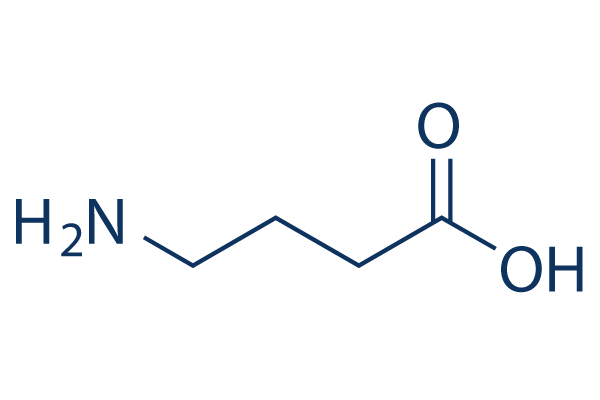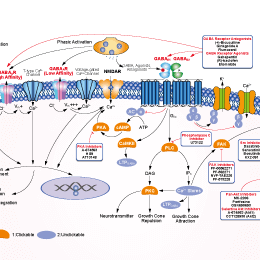
- Bioactive Compounds
- By Signaling Pathways
- PI3K/Akt/mTOR
- Epigenetics
- Methylation
- Immunology & Inflammation
- Protein Tyrosine Kinase
- Angiogenesis
- Apoptosis
- Autophagy
- ER stress & UPR
- JAK/STAT
- MAPK
- Cytoskeletal Signaling
- Cell Cycle
- TGF-beta/Smad
- Compound Libraries
- Popular Compound Libraries
- Customize Library
- Clinical and FDA-approved Related
- Bioactive Compound Libraries
- Inhibitor Related
- Natural Product Related
- Metabolism Related
- Cell Death Related
- By Signaling Pathway
- By Disease
- Anti-infection and Antiviral Related
- Neuronal and Immunology Related
- Fragment and Covalent Related
- FDA-approved Drug Library
- FDA-approved & Passed Phase I Drug Library
- Preclinical/Clinical Compound Library
- Bioactive Compound Library-I
- Bioactive Compound Library-Ⅱ
- Kinase Inhibitor Library
- Express-Pick Library
- Natural Product Library
- Human Endogenous Metabolite Compound Library
- Alkaloid Compound LibraryNew
- Angiogenesis Related compound Library
- Anti-Aging Compound Library
- Anti-alzheimer Disease Compound Library
- Antibiotics compound Library
- Anti-cancer Compound Library
- Anti-cancer Compound Library-Ⅱ
- Anti-cancer Metabolism Compound Library
- Anti-Cardiovascular Disease Compound Library
- Anti-diabetic Compound Library
- Anti-infection Compound Library
- Antioxidant Compound Library
- Anti-parasitic Compound Library
- Antiviral Compound Library
- Apoptosis Compound Library
- Autophagy Compound Library
- Calcium Channel Blocker LibraryNew
- Cambridge Cancer Compound Library
- Carbohydrate Metabolism Compound LibraryNew
- Cell Cycle compound library
- CNS-Penetrant Compound Library
- Covalent Inhibitor Library
- Cytokine Inhibitor LibraryNew
- Cytoskeletal Signaling Pathway Compound Library
- DNA Damage/DNA Repair compound Library
- Drug-like Compound Library
- Endoplasmic Reticulum Stress Compound Library
- Epigenetics Compound Library
- Exosome Secretion Related Compound LibraryNew
- FDA-approved Anticancer Drug LibraryNew
- Ferroptosis Compound Library
- Flavonoid Compound Library
- Fragment Library
- Glutamine Metabolism Compound Library
- Glycolysis Compound Library
- GPCR Compound Library
- Gut Microbial Metabolite Library
- HIF-1 Signaling Pathway Compound Library
- Highly Selective Inhibitor Library
- Histone modification compound library
- HTS Library for Drug Discovery
- Human Hormone Related Compound LibraryNew
- Human Transcription Factor Compound LibraryNew
- Immunology/Inflammation Compound Library
- Inhibitor Library
- Ion Channel Ligand Library
- JAK/STAT compound library
- Lipid Metabolism Compound LibraryNew
- Macrocyclic Compound Library
- MAPK Inhibitor Library
- Medicine Food Homology Compound Library
- Metabolism Compound Library
- Methylation Compound Library
- Mouse Metabolite Compound LibraryNew
- Natural Organic Compound Library
- Neuronal Signaling Compound Library
- NF-κB Signaling Compound Library
- Nucleoside Analogue Library
- Obesity Compound Library
- Oxidative Stress Compound LibraryNew
- Plant Extract Library
- Phenotypic Screening Library
- PI3K/Akt Inhibitor Library
- Protease Inhibitor Library
- Protein-protein Interaction Inhibitor Library
- Pyroptosis Compound Library
- Small Molecule Immuno-Oncology Compound Library
- Mitochondria-Targeted Compound LibraryNew
- Stem Cell Differentiation Compound LibraryNew
- Stem Cell Signaling Compound Library
- Natural Phenol Compound LibraryNew
- Natural Terpenoid Compound LibraryNew
- TGF-beta/Smad compound library
- Traditional Chinese Medicine Library
- Tyrosine Kinase Inhibitor Library
- Ubiquitination Compound Library
-
Cherry Picking
You can personalize your library with chemicals from within Selleck's inventory. Build the right library for your research endeavors by choosing from compounds in all of our available libraries.
Please contact us at [email protected] to customize your library.
You could select:
- Antibodies
- Bioreagents
- qPCR
- 2x SYBR Green qPCR Master Mix
- 2x SYBR Green qPCR Master Mix(Low ROX)
- 2x SYBR Green qPCR Master Mix(High ROX)
- Protein Assay
- Protein A/G Magnetic Beads for IP
- Anti-Flag magnetic beads
- Anti-Flag Affinity Gel
- Anti-Myc magnetic beads
- Anti-HA magnetic beads
- Poly FLAG Peptide lyophilized powder
- Protease Inhibitor Cocktail
- Protease Inhibitor Cocktail (EDTA-Free, 100X in DMSO)
- Phosphatase Inhibitor Cocktail (2 Tubes, 100X)
- Cell Biology
- Cell Counting Kit-8 (CCK-8)
- Animal Experiment
- Mouse Direct PCR Kit (For Genotyping)
- New Products
- Contact Us
4-Aminobutyric acid (GABA)
Synonyms: 4-Aminobutanoic acid, GABA, Gamma-aminobutyric acid, Piperidic acid
4-Aminobutyric acid (4-Aminobutanoic acid, GABA, Gamma-aminobutyric acid, Piperidic acid) is a naturally occurring neurotransmitter with central nervous system (CNS) inhibitory activity.

4-Aminobutyric acid (GABA) Chemical Structure
CAS: 56-12-2
Selleck's 4-Aminobutyric acid (GABA) has been cited by 1 publication
Purity & Quality Control
Batch:
Purity:
99%
99
4-Aminobutyric acid (GABA) Related Products
| Related Targets | GABAA receptor GABAB receptor | Click to Expand |
|---|---|---|
| Related Products | Cyclothiazide Dihydromyricetin Gabapentin Flumazenil CGP52432 Ginkgolide A (R)-baclofen | Click to Expand |
| Related Compound Libraries | FDA-approved Drug Library Natural Product Library Neuronal Signaling Compound Library CNS-Penetrant Compound Library Anti-alzheimer Disease Compound Library | Click to Expand |
Signaling Pathway
Choose Selective GABA Receptor Inhibitors
Biological Activity
| Description | 4-Aminobutyric acid (4-Aminobutanoic acid, GABA, Gamma-aminobutyric acid, Piperidic acid) is a naturally occurring neurotransmitter with central nervous system (CNS) inhibitory activity. | |
|---|---|---|
| Targets |
|
| In vitro | ||||
| In vitro | γ-Aminobutyric acid (GABA) functions primarily as an inhibitory neurotransmitter in the mature central nervous system. The addition of GABA into the cell culture medium promoted the proliferation of GABRP-expressing PDAC cells, but not GABRP-negative cells, and GABAA receptor antagonists inhibited this growth-promoting effect by GABA. The HEK293 cells constitutively expressing exogenous GABRP revealed the growth-promoting effect of GABA treatment. GABA treatment in GABRP-positive cells increased intracellular Ca2+ levels and activated the mitogen-activated protein kinase/extracellular signal-regulated kinase (MAPK/Erk) cascade[1]. GABA exerts antidiabetic effects by acting on both the islet β-cells and immune system. Unlike in adult brain or islet α-cells in which GABA exerts hyperpolarizing effects, in islet β-cells, GABA produces membrane depolarization and Ca2+ influx, leading to the activation of PI3K/Akt-dependent growth and survival pathways[2]. | |||
|---|---|---|---|---|
| Cell Research | Cell lines | PDAC cell lines KLM-1, SUIT-2, KP-1N, PK-1, PK-45P, and PK-59 | ||
| Concentrations | 0, 1, 10, 100 μmol/L | |||
| Incubation Time | 6 days | |||
| Method | GABRP-positive cell lines, KLM-1 and PK-45P, and GABRP-negative cell lines, PK-59 and KP-1N, are incubated with GABA or GABA receptor agonist Muscimol at serial concentration (0, 1, 10, 100 μmol/L) in appropriate medium supplemented with 1% FBS for 6 days. To inhibit the GABA-mediated pathway, cells are incubated with 250 μmol/L of GABAA receptor antagonist bicuculline methiodide or 1 mmol/L of GABAB receptor antagonist CGP-35348. After 6 days of exposure to either of these drugs, cell viability is measured by MTT assay as described above. | |||
| In Vivo | ||
| In vivo | GABA is the principal inhibitory neurotransmitter in the adult brain that has a parallel inhibitory role in the immune system. GABAergic medications are used to treat anxiety, alcohol withdrawal, epilepsy, and to induce sedation, and anesthesia. GABA is neuroprotective in animal models of stroke. GABA treatment decreases inflammatory cytokine production in peripheral macrophages. It decreases T cell autoimmunity and the development of inflammatory responses in the nonobese diabetic mouse model of type 1 diabetes[3]. In the adult brain, GABA induces a fast inhibition in neurons mainly through the GABAA receptor (GABAAR). GABA is produced by pancreatic β-cells. GABA released from β-cells can act on GABAAR in the α-cells, causing membrane hyperpolarization and hence suppressing glucagon secretion. GABA-treated mice showed higher circulating insulin, lower glucagon, nearly normal glycemia, improved metabolic conditions, and maintained close to normal glucose tolerance during a period of 53 d after STZ injections[2]. | |
|---|---|---|
| Animal Research | Animal Models | Mice(CD1 mice) with STZ-induced diabetes |
| Dosages | 20 μmol per mouse | |
| Administration | i.p. | |
| NCT Number | Recruitment | Conditions | Sponsor/Collaborators | Start Date | Phases |
|---|---|---|---|---|---|
| NCT06057233 | Not yet recruiting | Epilepsy Temporal Lobe |
University Hospital Grenoble|Université Grenoble-Alpes|Institut National de la Santé Et de la Recherche Médicale France |
March 2024 | -- |
| NCT05995769 | Not yet recruiting | Alcohol Use Disorder|Alcoholism |
University of Calgary|Johns Hopkins University|University of Maryland|Canadian Institutes of Health Research (CIHR) |
January 2024 | Phase 2 |
| NCT04794335 | Withdrawn | Inflammatory Bowel Diseases |
University of Pittsburgh|National Institute of Diabetes and Digestive and Kidney Diseases (NIDDK) |
November 1 2023 | -- |
Chemical Information & Solubility
| Molecular Weight | 103.12 | Formula | C4H9NO2 |
| CAS No. | 56-12-2 | SDF | Download 4-Aminobutyric acid (GABA) SDF |
| Smiles | C(CC(=O)O)CN | ||
| Storage (From the date of receipt) | |||
|
In vitro |
Water : 20 mg/mL DMSO : Insoluble ( Moisture-absorbing DMSO reduces solubility. Please use fresh DMSO.) Ethanol : Insoluble |
Molecular Weight Calculator |
|
In vivo Add solvents to the product individually and in order. |
In vivo Formulation Calculator |
||||
Preparing Stock Solutions
Molarity Calculator
In vivo Formulation Calculator (Clear solution)
Step 1: Enter information below (Recommended: An additional animal making an allowance for loss during the experiment)
mg/kg
g
μL
Step 2: Enter the in vivo formulation (This is only the calculator, not formulation. Please contact us first if there is no in vivo formulation at the solubility Section.)
% DMSO
%
% Tween 80
% ddH2O
%DMSO
%
Calculation results:
Working concentration: mg/ml;
Method for preparing DMSO master liquid: mg drug pre-dissolved in μL DMSO ( Master liquid concentration mg/mL, Please contact us first if the concentration exceeds the DMSO solubility of the batch of drug. )
Method for preparing in vivo formulation: Take μL DMSO master liquid, next addμL PEG300, mix and clarify, next addμL Tween 80, mix and clarify, next add μL ddH2O, mix and clarify.
Method for preparing in vivo formulation: Take μL DMSO master liquid, next add μL Corn oil, mix and clarify.
Note: 1. Please make sure the liquid is clear before adding the next solvent.
2. Be sure to add the solvent(s) in order. You must ensure that the solution obtained, in the previous addition, is a clear solution before proceeding to add the next solvent. Physical methods such
as vortex, ultrasound or hot water bath can be used to aid dissolving.
Tech Support
Answers to questions you may have can be found in the inhibitor handling instructions. Topics include how to prepare stock solutions, how to store inhibitors, and issues that need special attention for cell-based assays and animal experiments.
Tel: +1-832-582-8158 Ext:3
If you have any other enquiries, please leave a message.
* Indicates a Required Field
Tags: buy 4-Aminobutyric acid (GABA) | 4-Aminobutyric acid (GABA) supplier | purchase 4-Aminobutyric acid (GABA) | 4-Aminobutyric acid (GABA) cost | 4-Aminobutyric acid (GABA) manufacturer | order 4-Aminobutyric acid (GABA) | 4-Aminobutyric acid (GABA) distributor








































